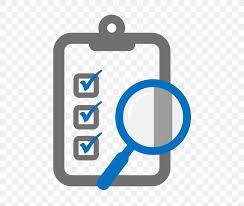Optimizing Return on Investment in Pay-Per-Click Advertising Campaigns
Pay-Per-Click (PPC) advertising, a cornerstone of digital marketing, facilitates targeted website traffic generation. However, maximizing return on investment (ROI) necessitates a strategic approach encompassing numerous facets. This article presents fifteen key principles, illustrated with practical examples, to enhance PPC campaign efficacy. We will define key concepts such as keyword research (the process of identifying relevant search terms), landing page optimization (improving the user experience on the page users land on after clicking an ad), A/B testing (comparing two versions of an ad to determine which performs better), and remarketing (retargeting users who have previously interacted with your website). Understanding these concepts is crucial for effective PPC management.
1. Defining Measurable Campaign Objectives: Before initiating a PPC campaign, establish clear, quantifiable goals aligned with overarching business strategies. This could involve increasing sales conversions, lead generation, or brand awareness. The SMART framework (Specific, Measurable, Achievable, Relevant, Time-bound) provides a robust structure for goal setting. For instance, instead of vaguely aiming for "increased sales," define the objective as "a 20% increase in online sales within the next quarter." This allows for precise measurement of campaign success.
2. Comprehensive Keyword Research and Targeting: Effective keyword research forms the bedrock of successful PPC campaigns. Utilize keyword research tools (e.g., Google Keyword Planner, SEMrush) to identify relevant keywords reflecting user search intent and aligning with your target audience. Consider employing a combination of broad match, phrase match, and exact match keywords to optimize reach and budget allocation. For example, a company selling organic coffee might target broad keywords like "organic coffee" while also using long-tail keywords like "best organic fair-trade coffee beans for espresso." This multi-pronged approach balances broad reach with targeted precision.
3. Crafting Compelling Ad Copy and Call-to-Actions: Ad copy should be concise, persuasive, and tailored to the specific keyword and target audience. Incorporate strong calls-to-action (CTAs) to guide users towards desired actions (e.g., "Shop Now," "Learn More," "Download Now"). Ad copy should also leverage principles of persuasive communication, emphasizing the benefits of your product or service rather than solely focusing on features. Testing different versions of ad copy (A/B testing) helps identify the most effective messaging.
4. Landing Page Optimization for Conversion Maximization: Landing pages should be meticulously optimized for conversions. They must be relevant to the ad copy, load quickly, and offer a seamless user experience. A clear and prominent CTA is essential. A/B testing different landing page elements (e.g., headline, layout, CTA button) allows for continuous improvement and increased conversion rates. The principles of user-centered design should guide the landing page creation process, ensuring ease of navigation and information accessibility.
5. Strategic Use of Ad Extensions: Leveraging ad extensions (location extensions, call extensions, sitelink extensions) significantly enhances ad visibility and click-through rates (CTRs). These additions provide users with additional information, increasing engagement and making ads more informative and useful. This aligns with the principle of providing value to the user, increasing the likelihood of a positive interaction.
6. Precise Geographic Targeting: Focus advertising efforts on specific geographic locations where your target audience resides to minimize wasted ad spend. Geographic targeting options within PPC platforms allow for precise control over ad visibility based on location, ensuring efficient resource allocation and maximizing ROI.
7. Rigorous A/B Testing for Continuous Improvement: A/B testing is crucial for optimizing ad performance. Test various ad elements (headlines, descriptions, CTAs, landing pages) to identify which versions resonate most effectively with your audience. This iterative process allows for continuous refinement and improved campaign effectiveness. Statistical significance testing should be utilized to ensure that observed differences in performance are not due to random chance.
8. Data-Driven Campaign Monitoring and Refinement: Continuous monitoring of campaign performance metrics (CTR, conversion rates, cost per conversion (CPC), return on ad spend (ROAS)) is crucial. Regular analysis of this data enables timely adjustments to optimize campaign efficiency and maximize ROI. This aligns with the principle of agile marketing, adapting strategies based on real-time data and feedback.
9. Targeting Long-Tail Keywords for Higher Conversion Rates: While broad keywords attract significant traffic, long-tail keywords (more specific, multi-word phrases) often yield higher conversion rates. They indicate a stronger user purchase intent, resulting in a more qualified audience. This demonstrates an understanding of search engine optimization (SEO) principles and how to leverage user search behavior.
10. Effective Remarketing Strategies for Re-engagement: Remarketing campaigns allow re-engagement with users who have previously interacted with your website but didn't convert. These targeted campaigns increase conversion rates by nurturing leads and reminding users of your offerings. This leverages the principles of behavioral marketing, tailoring messaging based on past user interactions.
11. Budget Allocation and Management: Establishing a realistic budget aligned with campaign objectives is crucial for preventing overspending. Employing bid strategies, like cost-per-click (CPC) or cost-per-acquisition (CPA) bidding, assists in maintaining budget control while maximizing ROI. This demonstrates a fundamental understanding of PPC platform functionality and budget optimization techniques.
12. Strategic Ad Scheduling for Peak Engagement: Analyzing user search patterns allows for strategic ad scheduling. Focusing ad display during peak hours when your target audience is most active optimizes campaign reach and budget allocation. This leverages user behavior data to optimize advertising spend.
13. Leveraging Ad Customizers for Personalization: Ad customizers allow dynamic insertion of data (e.g., prices, location-specific information) into ads, enhancing personalization and increasing engagement. This personalized approach resonates more strongly with users, potentially boosting click-through and conversion rates. This reflects an understanding of the principles of personalized marketing.
14. Competitive Analysis and Strategy Adjustment: Monitoring competitor ads provides valuable insights. Analyzing competitor strategies (keywords, ad copy, bidding) allows identification of opportunities and informed adjustments to your own campaigns. This competitive analysis informs data-driven decision-making and helps to maintain a competitive edge.
15. Diversification Across Multiple Ad Networks: Exploring various ad networks (Google Ads, Bing Ads, social media platforms) expands reach and diversifies campaign efforts. Each platform offers a unique audience and targeting options, maximizing overall campaign effectiveness. This demonstrates an understanding of the multi-channel marketing landscape.
Conclusions and Recommendations
Optimizing ROI in PPC advertising demands a holistic approach, encompassing meticulous planning, continuous monitoring, and iterative adjustments. Successful campaigns are data-driven, employing A/B testing and rigorous performance analysis for ongoing optimization. The application of marketing principles such as the SMART framework, user-centered design, and behavioral marketing is crucial for long-term success. Future research could explore the impact of artificial intelligence (AI) in automating PPC campaign optimization and improving predictive modelling for campaign performance. The integration of AI-powered tools could revolutionize how marketers manage and refine their PPC strategies, further increasing efficiency and ROI.
Reader Pool: Considering the multifaceted nature of successful PPC campaigns, what are the most critical factors to consider when allocating budget across various campaign elements to maximize ROI?




No comments yet. Be the first to share your thoughts!